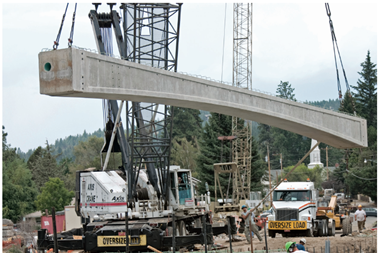CDPQ Infra, an investment vehicle set up this year by Caisse de dépôt et placement du Québec, could be used to invest in infrastructure projects outside Canada.
Michael Sabia, president and CEO of CDPQ, told delegates at the Canadian Council for Public-Private Partnership’s annual conference in Toronto last week that it plans to go global with its new infrastructure approach.
CDPQ with Québec government to create a business model for the building of major infrastructure projects. The government will identify viable projects and CDPQ Infra is take on responsibility for planning, financing, building and operating projects.
Sabia said the approach – which differs from traditional public-private partnerships (PPPs) where the public sector shoulders some of the financial risk – could be taken to infrastructure markets outside Canada.
“Because we have a global focus, we are confident in our ability to do this – and to do it well and deliver it on time and on budget,” he said.
Sabia went on to explain how urban population growth is expected to boom in the next few years with opportunities specifically in India, China and Nigeria.
“This calls for an unprecedented marshaling of financial resources of policy and government flexibility and most importantly creativity,” he said.
CDPQ Infra was created to act as the owner and operator of infrastructure projects – described as a “one-stop shop” for infrastructure investment.
Sabia said the Québec government decides what projects should be taken on and CDPQ Infra assesses whether they are commercially viable. CDPQ Infra provides options to governments and, once a decision is made, the company takes over all stages of execution, from financing to long-term operations.
Sabia said CDPQ was comfortable with taking all of the financial risk away from governments.
“We’re doing that because we think we know how to manage it,” he said “We think we have enough experience in a variety of infrastructure projects.”
CDPQ Infra is already evaluating the creation of public transit systems connecting central Montréal with Montréal-Trudeau International Airport, and across Montréal’s new Champlain Bridge.
Sabia described these as examples of “public-public partnerships”. He said users would ultimately be contributing to their own pension savings, creating a virtuous circle.
He added: “Infrastructure is the connectivity that brings an economy to life. It’s the thing that connects people to jobs, connects people to information and broadband, the thing that connects products to markets through airports and ports. All those things contribute to the competitiveness of an economy.”
Sabia admitted that the CDPQ Infra model might not work in all areas and the CDPQ will remain an investor in other traditional infrastructure investments.
“We are not replacing anything, we are just broadening out what we do,” he said.
, CDPQ invested in Mexican infrastructure alongside local pension funds.
Sabia said the main reason for the CAD240bn institution to ramp up its infrastructure exposure – which has risen from CAD3bn to CAD12bn in five years – was current monetary policy and low interest rates.
He stressed said infrastructure provides investors low risk, protection of capital and incremental returns.
Delegates also heard from a number of pension funds about the attractiveness of infrastructure investments and PPPs – particularly for matching their liabilities.
Etienne Middleton, senior principal at Canada Pension Plan Investment Board (CPPIB), said: “What we’re looking to do is basically maximise the returns of the money that we manage without undue risk of loss.
“As it pertains to infrastructure, it is really about finding long-term, stable investments that are going to deliver over that long-term period.”
Andrew Clearhout, senior vice-president at Ontario Teachers’ Pension Plan (OTPP), said: “One of the big reasons that infrastructure is attractive to us is that it provides inflation protection – whether implicit or explicit – [and] it helps us mitigate the inflation adjustments we provide our members, which [are] extremely long-dated as are our liabilities.”
But the limitations of PPPs were also discussed, particularly around leverage and fears among the public sector around a lack of control.
Tom Osborne, executive director with IFM Investors, which is owned by 30 pension funds, said some jurisdictions, like the US, are fearful of PPPs because of the perception of a lack of control.
“The key thing is to have a lively debate and discuss how infrastructure should be financed,” he said.
“We have relied for too long on incumbent methods in the US and would love to see PPPs, but that requires early stakeholder involvement. Ultimately it’s about achieving the optimal balance of control, risk and value.”
Many of infrastructure projects act as an economic tool for local economies, said Lou Serafini, president and CEO of Toronto-based Fengate Capital.
He said: “We have to make sure we are doing it the right way and not getting too aggressive with what ‘value for money’ means.”
When equity is spread too thin and too many concessions are made for political or local reasons, problems can arise, he said.
“As an economic tool, it is possible to look at revenue and see how projects can change cities, and the current view is too short-term rather than looking at projects that can last 100 years.”








